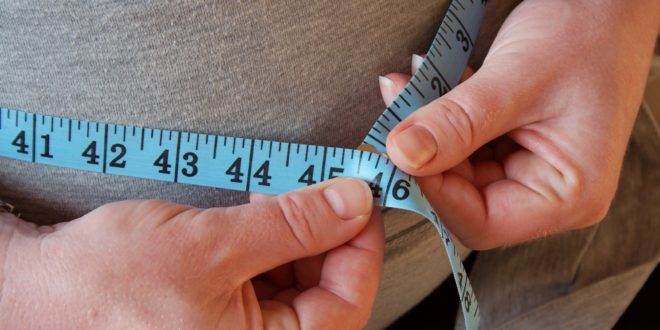by Michelle Sutton-Kerchner
You did the crunches. You mastered the plank. Yet, your waist refuses to whittle. New research tells what may be the culprit so you can fix it fast …
The Dangers of Abdominal Fat
Unlike fat that develops in other areas of the body, belly fat is visceral fat. That is tech talk for the fat that fills around the viscera, internal organs like the stomach and intestines. Belly weight hides deep in the body. Visceral fat produces toxins that increase your risk of heart disease, type 2 diabetes, and some types of cancer. It’s not only your skinny jeans that suffer.
To determine if your waistline is putting you at risk, grab a tape measure. Women should aim for a waist measurement of 34 inches or less. Men should aim for a waist measurement of 39 inches or less.
Tricks for a Tight Tummy

Change the Channel. Watching TV is not all bad, according to recent studies. Research shows you can create a healthy TV experience that helps improve immune function, rejuvenate the brain, improve social support, and learn to overcome challenges. (Who knew!) However, those hoping to lose weight, especially belly fat, should avoid watching food TV. The recipes demonstrated are often high in fat, calories, and sugar. Even if you never attempt them, they’ll send you to the kitchen with unhealthy cravings.
Instead, watch feel-good shows and educational TV while enjoying a healthful snack. Or, take advantage of commercials with quick, high-intensity mini-workouts. Skip commercials completely by recording your favorite shows. This will limit time spent on the couch and exposure to commercials for junk food.

Focus on the present. Those who are mindful tend to carry an average of one pound less belly fat than those who are not. Experts connect a mindful approach to an ability to be more objective in decision-making, which helps you better resist unhealthy cravings and habits. Also, food eaten mindfully is usually enjoyed more and leaves you more satisfied. (Translated: You’re less likely to snack around the kitchen trying to satisfy your appetite while inadvertently expanding your waistline.)
Get Your Calcium. Over half of women are calcium deficient. According to a study published in the journal Nutrients, calcium-rich dairy can help flatten your stomach. Study participants who ate three daily servings of milk-based products over 12 weeks lost approximately 2.2 pounds more belly fat than those who consumed less of such foods. Experts correlate this outcome with calcium’s ability to help suppress a hormone that causes the body to store fat.
Sleep well. Lack of sleep allows more time for unhealthy snacking. Often, these late-nights are accompanied by comfort foods used to fuel the “midnight oil,” whether to accomplish more work or stay alert for that show with the must-see finale. Sleep deprivation also affects hormones, including those that cue hunger. Too little sleep may increase feelings of hunger and leave you feeling less full when finished.
Even if you can’t get your full sleep requirement, aim for at least three to four hours of restorative sleep. How to manage this quality snooze? Healthy fatigue through exercise, of course.
Stress less. Stress elevates cortisol, which is linked to fat storage in the waist area. Commit to a fitness program so you can burn off stress as well as calories—a twofer slimming effect on your middle.
Other Surprising Factors
What do diet soda, exposure to traffic, and long commutes have in common? All contribute to a wider waist.
Consumers of low-cal beverages tend to gain more belly fat than their regular-soda counterparts. The artificial sweeteners in diet soda are believed to prevent the brain from registering satiety. This leads to consumption of more sweets.

Continuous background noise, specifically traffic from trains, cars, and planes, may increase cortisol levels, a stress hormone associated with abdominal fat.
Long commutes are not such a mystery. The more time spent sitting behind the wheel, the less movement achieved. This is compounded if the commute leads to sitting at a desk all day. Consider stopping at the Center to break up your drive with a workout. It’ll also help burn off the stress of aggressive drivers. Hit the Center on the way home to burn off work tensions.
Now you know these sneaky sabotages to your six-pack. More importantly, you know how to combat them!
Sources
“The Couch Potato Guide: 11 Ways to Make Your TV Habit Healthy,” at everydayhealth.com.
Webmd.com
“What’s Really Widening Your Waist,” by Lesley Rotchford, Shape, vol. 35, no. 7.
Image Credits
Remote controls: pixabay.com/en/remote-control-tv-television-table-932273
Sweat: pixabay.com/en/gym-room-fitness-equipment-1181818
Traffic: pixabay.com/en/passenger-traffic-airline-aviation-122999
 Fitness & Wellness News Your Source for Fitness News, Wellness News, Health News, and Nutrition News!
Fitness & Wellness News Your Source for Fitness News, Wellness News, Health News, and Nutrition News!




